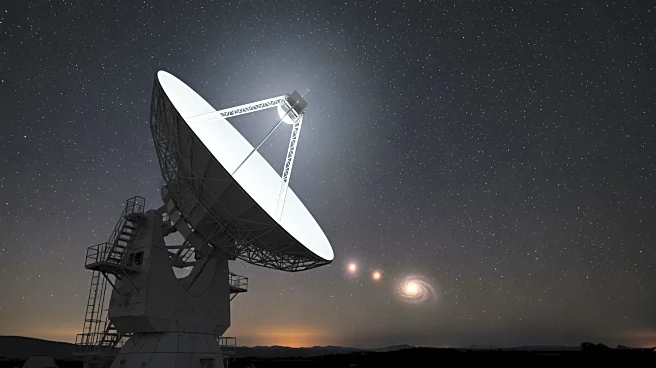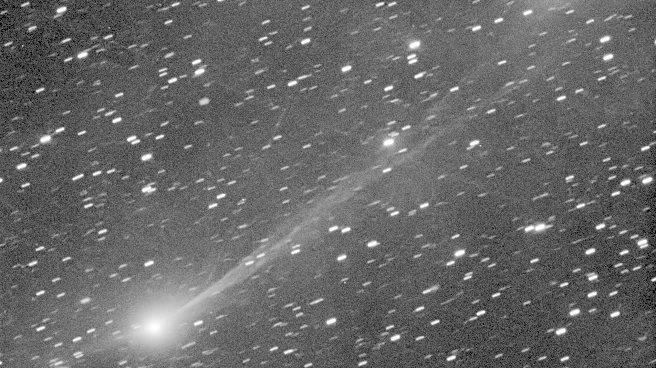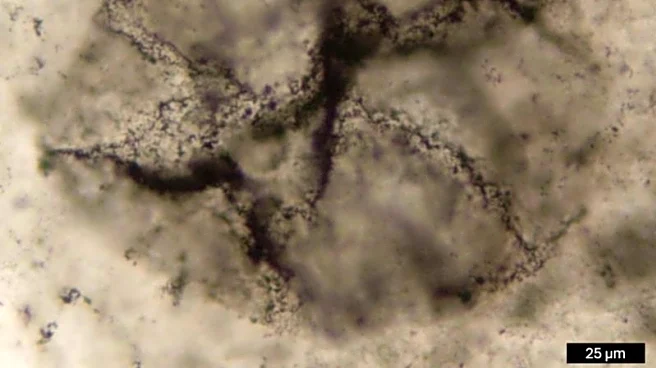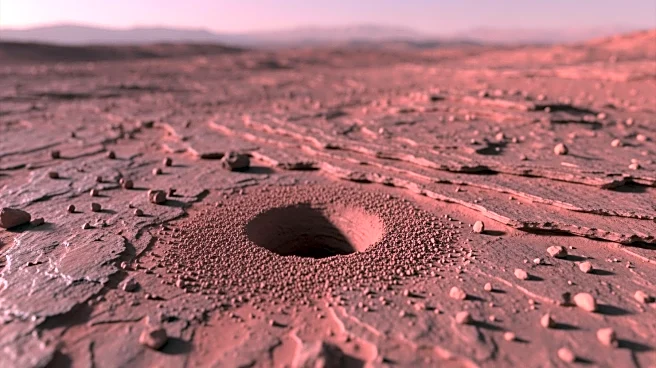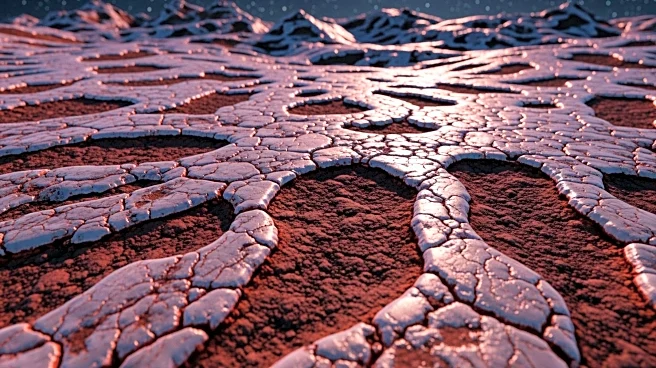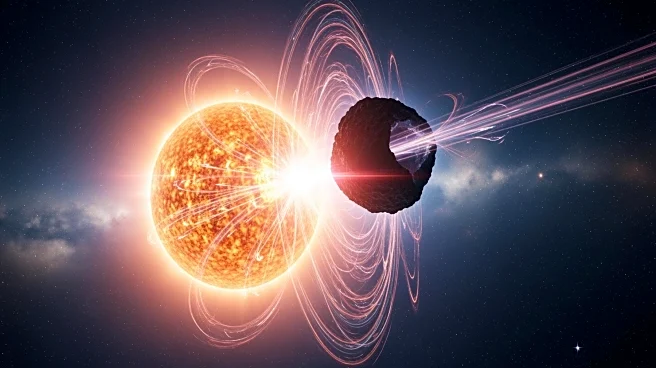What's Happening?
NASA's Perseverance rover has discovered a mysterious rock on Mars that has baffled scientists due to its unusual composition. The rock, named Phippsaksla, was found near the rim of the Jezero crater,
a site believed to have once hosted life. Measuring 31 inches across, the rock stands out because of its sculpted appearance and high iron and nickel content, which is atypical for rocks found in the crater. Dr. Candice Bedford, a geologist from Purdue University, suggests that the rock may have originated from elsewhere in the solar system, possibly as an iron-nickel meteorite formed in the core of large asteroids. This discovery adds to the ongoing exploration of Mars' geology by Perseverance, which has been active since February 2021.
Why It's Important?
The discovery of Phippsaksla is significant as it may provide insights into the history of meteor impacts on Mars and the planet's geological evolution. The high metal content of the rock suggests it could be a rare type of meteorite, offering clues about the solar system's formation and the processes that shaped Mars. Understanding the composition and origin of such rocks can help scientists learn more about the potential for life on Mars and the planet's past environmental conditions. This finding also highlights the importance of continued exploration and study of Mars, as each discovery contributes to the broader understanding of planetary science and the potential for future human exploration.
What's Next?
NASA scientists plan to conduct further analysis of Phippsaksla to confirm whether it is indeed a meteorite. If proven, this would place Perseverance among the rovers that have investigated rare Martian meteorites. The rover's ongoing mission in the Jezero crater will continue to focus on exploring areas that may have once been filled with water, searching for signs of past life. Future studies may involve comparing Phippsaksla with other meteorites found by previous rovers, such as Curiosity and Spirit, to better understand the distribution and characteristics of meteorites on Mars.
Beyond the Headlines
The discovery of Phippsaksla raises questions about the frequency and impact of meteorite falls on Mars. The presence of iron-nickel meteorites, which are typically formed in the cores of large asteroids, suggests that Mars has been subject to significant meteorite activity. This could have implications for understanding the planet's surface evolution and the potential hazards for future missions. Additionally, the study of such meteorites can provide valuable information about the solar system's history and the processes that govern planetary formation and change.




